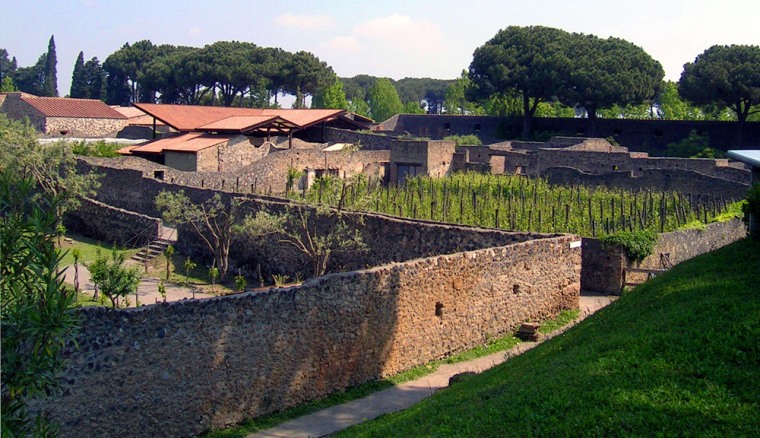Sauces made from fermented fish entrails. A quiche-like pastry shell filled with bay leaves and ricotta cheese. For dessert, peaches with aromatic cumin and honey.
Those tastes may not be for everyone’s palate, but the specialties of ancient Pompeii are being revived for a month at the site of the ruins by a research project intended to give new insights into how the Romans lived.
Pompeii’s busiest restaurant was buried with the rest of the prosperous city when Mount Vesuvius erupted in A.D. 79. The eruption killed thousands of people, but a 20-foot-deep (6-meter-deep) cocoon of volcanic ash kept the city almost intact, providing precious information on domestic life in the ancient world.
Starting Thursday, visitors will do more than stroll around the restaurant’s tables and gaze at the kitchen tools that have stayed where residents left them when they were surprised by the eruption.
Replanting fruits and vegetables
Researchers have tried to revive the city’s food by replanting — in the restaurant’s garden and in other open spaces — the fruits and vegetables that were part of the Roman diet: figs and olives, plums and grapes, as well as poppy, broom (a flowery bush), bramble (a prickly shrub) and mallow (an herb).
Kits with the ingredients will be sold to visitors in the area around the restaurant with instructions on how to cook Roman specialties. Although there will be no cooking on the site, visitors will be directed to a local restaurant where some of the ancient specials will be offered.
“We wanted to learn what the inhabitants of Pompeii ate,” said Anna Maria Ciarallo, a biologist who heads the project for Pompeii’s archaeological office. “But we wanted a side of the project to appeal directly to the public as well.”
Some may keep away from “garum,” a pungent sauce used for flavoring and obtained by fermenting fish entrails, but Ciarallo said many Roman dishes closely resembled modern cuisine.
The recipe to make prosciutto ham has remained unchanged, while “savillum,” the favorite dessert of many Romans, was a baked cream similar to today’s custard, she said.
Pompeii’s wealthy were known to feast on such exotic dishes as swallow’s tongue and parrot meat, but the project is presenting more everyday fare, Ciarallo said.
Imagining an ancient eatery
The restaurant was located between the gymnasium, the amphitheater and one of the city’s gates and mostly catered to middle-class merchants and travelers, she said.
Its six benches were probably always filled with hungry customers passing through the busy neighborhood, she said. The guests would recline on one side on the benches, as eating customs demanded at the time, to chat, play dice — one of the Romans’ favorite pastimes — and partake of the dishes served out of large pots. The quiche-like “libum” is made with bread, bay leaves and cheese resembling today’s ricotta.
“It was a sweet and sour cuisine, which blended the sharp tastes of vinegar and spices with the sugars of honey and figs,” Ciarallo said.
Cereals and beans were the staples of the Roman diet, together with fish, cheese and limited quantities of eggs and meat.
“The main differences were between the social classes,” she said.
Slaves were kept on a high-energy diet of bread, dried-fruits and low-quality cheese and wine. The upper classes enjoyed the same foods available to the middle class, but the quantities were larger, the ingredients finer, and the banquets were lavish presentations.
The project will shut down on June 26 because of lack of funds — a perennial problem that keeps parts of the huge Pompeii site often closed to the public.
